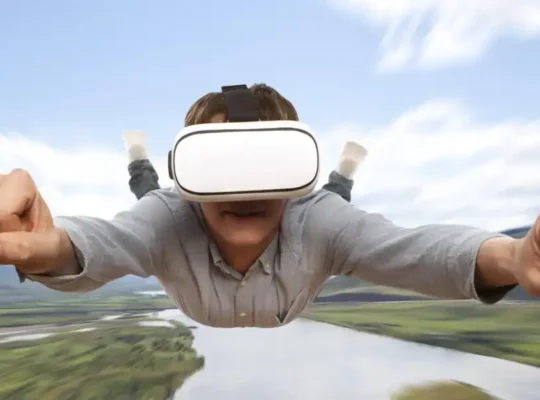In the fast-evolving landscape of technology, scientists and innovators are turning to an unlikely source for inspiration – nature. Biomimicry, a discipline that emulates nature's design principles, has become a catalyst for groundbreaking tech innovations. From intricate spider silk structures to the resilient properties of geckos' feet, nature's design secrets are unlocking a new realm of possibilities. In this exploration of biomimicry, we delve into the fascinating ways in which nature is influencing and shaping the future of technology.
Nature Exploration: The Genesis of Biomimicry
Nature, with its eons of evolution, has fine-tuned designs to ensure survival and efficiency. Biomimicry taps into these designs, extracting inspiration for technological advancements. The interplay of ecosystems, adaptation, and evolution has gifted us with a myriad of solutions waiting to be unraveled.
The Biomechanics Behind Biomimicry
Understanding the biomechanics of creatures like birds, fish, and insects unveils a treasure trove of innovations. From the seamless flight of birds to the sonar navigation of bats, nature's biomechanical prowess serves as a blueprint for drones, aviation, and navigation systems.
Nature's Architectural Wonders: Building Better with Biomimicry
Nature's architectural marvels, from beehives to termite mounds, showcase efficiency and sustainability. Mimicking these structures, architects and engineers are creating energy-efficient buildings and self-cooling systems. The intricate balance found in ecosystems is a lesson in sustainable design.
Spider Silk: Nature's Miracle Material
The strength and flexibility of spider silk have fascinated scientists for years. Now, this biomaterial is finding applications in industries such as textiles, medicine, and even electronics. The secrets of spider silk are rewriting the possibilities of material science.
Microscopic Marvels: Biomimicry at the Nano Level
Venturing into the microscopic realm, biomimicry finds inspiration in the intricate world of cells, bacteria, and molecular structures. Nanotechnology, influenced by nature's small-scale wonders, is making waves in fields like medicine, electronics, and environmental monitoring.
The Lotus Effect: Self-Cleaning Surfaces
The lotus plant's ability to repel water and remain self-cleaned has inspired innovations in surface coatings. From paint to fabrics, products with self-cleaning capabilities are reducing maintenance efforts and environmental impact.
Nature's Time-Tested Solutions: Biomimicry in Medicine
The intricacies of the human body find parallels in nature's creations. Biomimicry in medicine involves emulating the body's systems for innovative solutions. From heart valves inspired by jellyfish movements to bioengineered tissues, nature is a masterful medical mentor.
Gecko's Feet: Adhesion Beyond Gravity
The gecko's ability to scale vertical surfaces with ease has spurred the development of advanced adhesives. These adhesives have applications in industries ranging from robotics to space exploration, showcasing the potential of biomimicry in solving real-world challenges.
Sustainable Tech: Mimicking Nature's Circular Economy
Nature operates on a circular economy principle, where waste is minimized, and resources are recycled. Biomimicry is steering the tech industry towards sustainable practices, influencing product lifecycle, and waste management.
Bee-Inspired Pollination Drones
With the decline of bee populations, biomimicry offers solutions like pollination drones. These aerial devices mimic bees' pollination techniques, ensuring the continuity of essential ecosystems.
Final Words
In the marriage of biology and technology, biomimicry emerges as a guiding light. Nature's design secrets are not merely a curiosity; they are a roadmap for sustainable, innovative, and efficient technological solutions. As we unravel the intricacies of the natural world, we open doors to a future where technology and nature coexist harmoniously, creating a more resilient and ecologically conscious world.
Commonly Asked Questions
Q1 How does biomimicry contribute to sustainable design?
Biomimicry provides sustainable solutions by emulating nature's efficient and eco-friendly designs, minimizing environmental impact.
Q2 Are there specific examples of biomimicry in the medical field?
Yes, examples include heart valves inspired by jellyfish movements and bioengineered tissues modeled after natural biological processes.
Q3 What role does nanotechnology play in biomimicry?
Nanotechnology, inspired by nature's microscopic wonders, influences fields such as medicine, electronics, and environmental monitoring.
Q4 How can biomimicry address the challenges in the aviation industry?
By studying biomechanics of birds and insects, biomimicry offers insights for creating more efficient and sustainable aviation technologies.
Q5 Can biomimicry help combat the decline in bee populations?
Yes, biomimicry solutions like pollination drones mimic bees' pollination techniques to support essential ecosystems.












